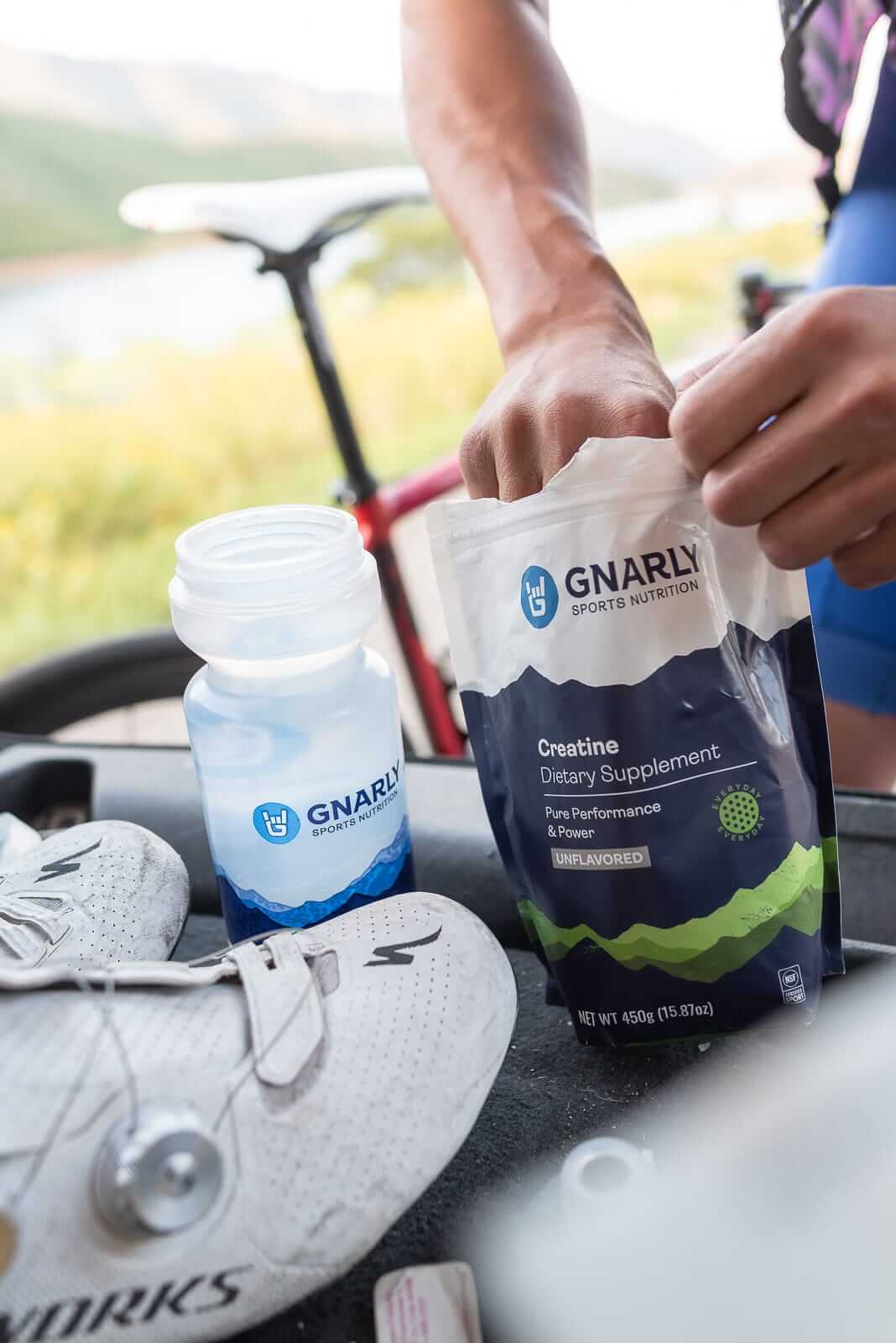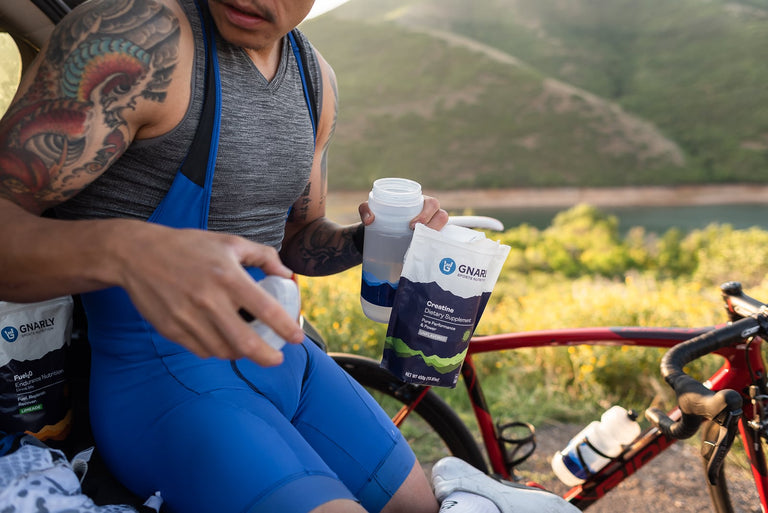Creatine: Nothing Controversial Here
The first time I heard about creatine was in college. It was my junior year and I had recently started lifting weights with a friend of mine. We had an idea about what was “good” (or at least worthwhile) general nutrition-wise, but supplements were—if not completely off our radar—subjugated to the bottom of our conscious brain. Everyone knew multivitamins were must-takes, but everything else was suspect.
I remember having a casual conversation with my friend about creatine—he brought the topic up, not me. We were walking from our apartment up the hill to our university’s gym, and while I don’t recall exactly what we discussed, I remember that by the end of it we had agreed that creatine wasn’t worth taking. Looking back now, I can only imagine what we said to reach that conclusion mutually. Whatever conversation we had, it wasn’t based on scientific reality, because even in 2005 there was already solid evidence to support creatine’s dominance as the king of sports supplements.
Since that conversation back in my university days, I’ve gained several years of graduate education in nutrition, learned to review and interpret scientific papers, and now generally use a scientific approach towards my personal nutrition.
Multivitamins are out—scientific evidence never supported their use—but I take creatine daily. The question I’m confronted with, then, is why are some supplements (like creatine) controversial despite strong positive evidence while others (like multivitamins) are uncontroversial despite strong negative evidence?
In other words, why do most people have a multi in their cabinet but not creatine?
A Bad Reputation and a Misinformed Consumer
I think, in part, creatine is weighed down by its history. Unlike most supplements—which were recommended and disseminated by doctors (real and fake) to the population at large for general health (despite the lack of evidence)—creatine’s popularity started with athletes, bodybuilders, and gym rats. It wasn’t a supplement that would make you “healthier”, nor would it make you live longer or be less prone to disease. As far as anyone knew at the time (if they knew anything at all), it would only help you increase muscle mass. It wasn’t smart, educated doctors recommending it; it was bros and meatheads.

Over time, creatine became associated with all the negative aspects of gym culture. It was tied to more dangerous practices, such as steroid use—for the record, creatine is not a steroid (or even a hormone), it’s a peptide (a short string of amino acids)—and was reviled as unnecessary, dangerous, and unnatural. It continues to fight these associations today, despite the accumulating years of evidence for its safety.
In fact, creatine is a molecule that every living human produces on their own—not to mention all the animals humans eat. It doesn’t work like a hormone, and it doesn’t directly affect muscle mass; if anything, creatine has more in common with carbohydrates or fats because it’s a part of our energy systems: creatine combines with a molecule of phosphate to form creatine phosphate, which can be broken back apart to regenerate ATP (adenosine triphosphate, the “energy currency” of the body).
In this way, creatine forms the backbone of our fastest energy system: the creatine phosphate system, sometimes called the phosphagen system. While carbohydrates and fats are longer-lasting fuel sources, creatine phosphate has the advantage of being extremely fast—it can regenerate ATP about twice as fast as anaerobic glycolysis, four times as fast as aerobic glycolysis, and eight times as fast as fat oxidation. This makes creatine the first line of defense against fatigue and an integral player sports performance, especially anaerobic sports.
The downside is that we have limited stores of creatine—only enough to power short bursts of intense exercise. Supplemental creatine improves performance by increasing those limited stores upwards of 33%. This isn’t a ton, but it is enough to improve exercise performance, particularly for more powerful, higher intensity tasks like lifting weights or sprinting. Furthermore, since creatine phosphate is continually regenerated during exercise (using carbohydrates and fats), the larger pool size can reduce fatigue for tasks in the minute-to-two-minute range as well.
Given the ubiquity of creatine phosphate in exercise—we literally have an entire biochemical system named for it—it’s not surprising how effective it is across sports. You don’t need to have the goal of gaining muscle to benefit from it, either. If you want to gain muscle, it helps by increasing the amount of higher intensity exercise you can do, thereby increasing the training stimulus for muscle growth. If muscle growth isn’t your goal, though, it still helps because more, higher-quality training is useful in every major sport. And, simply put, that’s exactly what creatine as a supplement does: increases the quality and quantity of your training.
To Load or not to Load
With creatine, you’ll often hear about the “loading phase”—a week-long phase during which you consume larger-than-normal amounts of creatine to increase muscle creatine levels faster. For some, this can be confusing, so let’s briefly discuss what loading is and why you may want to do it.
Our body is constantly making and breaking creatine molecules. Without any external supplementation, the rate of creatine creation and breakdown is roughly equal, which ensures your muscle levels stay constant. When we artificially boost muscle creatine levels, however, our body starts breaking the excess creatine down more rapidly to bring the body back to its preset equilibrium.
A loading phase is designed to bring our muscle levels up to their physiological maximum as rapidly as possible. It’s more than we need to maintain those increased levels, even considering the increased rate of breakdown, so we don’t need to continue taking such a high dose for more than a week (the amount of time it takes to reach maximum saturation). A loading dose is usually 300 mg/kg, or about 140 mg of creatine for every pound of bodyweight.
The maintenance dose, on the other hand, is designed to keep levels at max while compensating for the increased rate of breakdown. Since the maintenance dose is still greater than our normal intake of creatine, we can skip the loading phase and use it to increase muscle creatine levels to max, but it takes much longer—usually about a month. A typical maintenance dose is 5 grams per day.
The only real downside to the loading phase is cost—and it’s a minor downside considering how cheap creatine is and that you only need to do it once. Some people have made the argument that you can avoid putting on excess water weight (one of the side effects of creatine) by doing a “slow load”, but this is physiologically nonsensical: when in the muscle, creatine phosphate will always associate with water, and thus anytime creatine “works” it will cause a small amount of water weight gain. You can’t dodge it.
That being said, the only advantage to loading is three weeks of saved time. In the scheme of things, three weeks isn’t a lot, and it might not even be relevant depending on what your training currently looks like. So, make your own choice—there’s no wrong one.
Creatine as a Must-Take Supplement
If you are serious about your exercise or training, creatine is the most worthwhile supplement you can take. Except long-distance endurance sports like ultrarunning or cycling, most sports include at least some high-intensity moments. Furthermore, most athletes do at least a little cross-training by lifting weights or otherwise adding high-intensity training to their routine; creatine aids with this, as well.

Creatine is also a leveler. It would be hypothetically possible to get 100% of a normal dose of creatine from meat alone if you were willing to eat a couple pounds of red meat or fish a day. In studies, vegans and vegetarians routinely have lower levels of intramuscular creatine, and supplementing with creatine affects more than just exercise ability—it also affects cognitive functions like memory (creatine phosphate is also an important energy molecule in the brain). Since modern creatine supplements are produced in vegan-friendly ways, it’s now possible for anyone to have equally high levels of creatine.
The bottom line is that creatine is:
- Safe. It’s a peptide we produce ourselves and routinely consume through our diet. Excess creatine is simply broken down into its constituent amino acids, just like a protein.
- Effective. It’s the most studied sports supplement around and has a strong, positive track record. No other supplement has as much evidence for efficacy.
- Easy. You only need a small dose (about 5 grams) daily to get maximum benefit, and since it’s powdered, tasteless, and resistant to degradation you can add it to just about anything.
If there’s space for only one must-have supplement in your cabinet, it should be creatine. No other supplement compares.






